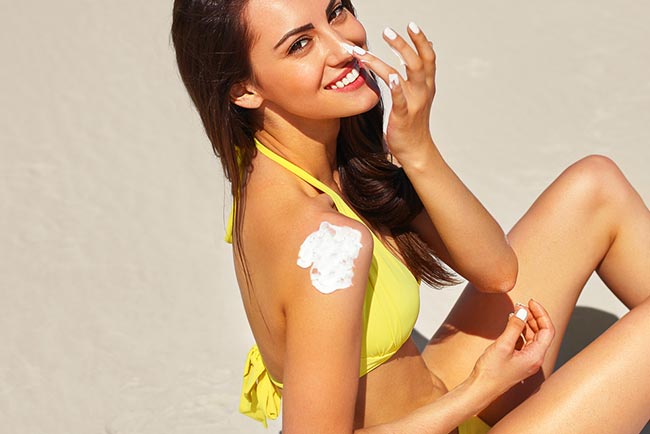The Different Types Of Sunscreen You Should Know About

Skin cancers have become more prevalent than before. Most of the time, the danger of developing cancer of the skin is directly influenced by the intensity and amount of UV light exposure. Fortunately, it is possible to limit the intensity and exposure of UV exposure hence lowering the possibility of skin cancer. Skin experts recommend using sunscreen regularly to protect yourself against sunlight. However, most people are not in a position to choose their sunscreens properly in relation to their type of skin. Here are various sunscreen types you should know about.
There are approximately seventeen different sunscreen ingredients approved by the FDA to be used in the U.S. They include both physical and chemical substances. Chemical sunscreen ingredients including cinnamates and para-aminobenzoic acid are in a position to absorb harmful UV rays, and most importantly, they can convert radiations from the sun to heat energy. On the other hand, physical sunscreens including titanium oxide and zinc oxide are in a position to scatter and deflect rays from the sun before they even penetrate the skin. The two types are safe and effective, but they require proper use. Many people are not able to tell the sunscreen ingredients that are right for them. It should be noted that toddlers and babies have varied sun protection requirements from adults.
Chemical-based sunscreens can irritate the sensitive skin of children. For example, oxybenzone and PABA have been shown to bring about skin reactions. However, physical sunscreens such as titanium dioxide and zinc oxide are great for individuals with sensitive skins. You can always find these sunscreens on children and babies category.
People with allergic skins or acne should not use products that contain fragrances or preservatives. Additionally, they should refrain from using products containing oxybenzone or PABA. Instead, they should use products that contain ingredients that are least likely to bring about skin reactions. These are the physical sunscreens and products made using ecamsule and salicylates. Allergy-prone people should never use sunscreens that contain alcohol. They shouldn’t use greasy sunscreens because they might exacerbate breakouts. Therefore, when choosing the best sunscreen for face, you should bear in mind some of these factors. You don’t want to use sunscreen that will cause more damage on your skin rather than good.
Moisturizing sunscreens work very well with dry skin. Most moisturizers are contained in sunscreens with the popular ones being silicones, oils, and lanolin. In most cases, moisturizing sunscreens are formulated as lotions, ointments or creams.
Sunscreens for individuals with melasma, fair skin or a skin cancer history
In case you belong to either of the above categories, it is advisable to use a sunscreen with SPF of 30 plus every day for additional protection. Because most people fail to apply the adequate amount of sunscreen provided on the container in order to achieve the required SPF, frequent reapplication is very important. Reapplication should be after every two hours when outdoors, immediately after sweating heavily or after swimming.
Dark skin people rarely burn, and this might make them assume that they don’t require sunscreen protection. However, they easily tan and this is a direct implication of DNA damage caused by harmful UV rays exposure. If you are dark-skinned, don’t use physical sunscreens such as titanium-based products. This is mainly because they appear white and chalky on the skin. Instead, look for chemical sunscreens with SPF of approximately 15 or more.
Older people have been exposed to large amounts of harmful UV rays in their lifetime. However, they still need to use sunscreen and enjoy the benefits. No matter your age, if you don’t protect your skin from UV radiation using the best sunscreen for face, you risk developing pre-cancers and new skin cancers. Unprotected sun exposure might accelerate aging of the skin leading to sagging, wrinkles, and leathery skin and age spots. Older people who tend to have decreased mobility might have a difficult time applying their sunscreen to some areas including the back and legs. That’s why they need spray-on sunscreens to ensure they apply sunscreen to these areas with much ease. The best thing about spray-on sunscreens is that they are currently available in both physical and chemical formulations.
Applying sunscreen regularly is important because it will help you avoid skin cancer. Consider educating yourself about the various sunscreen types to ensure you choose the product that is in line with your needs.
